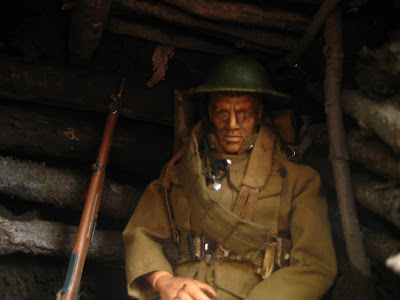 The American Workhorse of World War II
The American Workhorse of World War IIAmong the most common sights to all American forces serving in the Second World War was the Willys Jeep. First tested and accepted by the U.S. Armed Forces in the late 1930's, the Willys Jeep was to become as the title
depicts: the workhorse of the U.S. military. Starting in the First World War, the United States realized that they desperately needed a fast, mobile, low-
maintenance, all-terrain, multi-purpose fighting and transportation vehicle. The quickest and most reliable transportation of the day was still the horse-drawn ambulances for the battlefield, and the steam train-which, of course, as much as it was used behind the combat zones, could not be used on the battlefield. It became clear that to succeed in modern warfare, new technology was needed, especially in the case of transport.

Finally, at the outbreak of World War Two, two companies--General Motors and Willys--responded to the need of the military for the perfect vehicle. Willys won the race to come up with the best design, and by the early stages of World War two they had perfected the ideal all-purpose vehicle: the Willys Jeep.
 The first soldiers who received the jeep thought it was an excellent vehicle; and it would prove itself in the bitter fighting and rapid action to come. "Open fire!" Many jeeps were fitted with a Browning .30 caliber machine gun, which were belt-fed and fired from the rear.
The first soldiers who received the jeep thought it was an excellent vehicle; and it would prove itself in the bitter fighting and rapid action to come. "Open fire!" Many jeeps were fitted with a Browning .30 caliber machine gun, which were belt-fed and fired from the rear.  All jeeps were fitted with an axe and shovel,
All jeeps were fitted with an axe and shovel, and a gas can and spare tire. The only disadvantage was that the gas can was sometimes exposed to hot bullets and explosions in battle.
and a gas can and spare tire. The only disadvantage was that the gas can was sometimes exposed to hot bullets and explosions in battle.
Here a soldier gives directions to a driver of one of the new jeeps. 
When the weather went foul, the unpaved roads turned into a muddy quagmire that highly resembled chocolate-colored porridge. For days afterward, even after the sun made it's appearance, it could take days to dry out. It was at times such as this that the Willys Jeep proved itself as a true all-terrain vehicle, being able to make it's way through almost any terrain.

Another great aspect of the jeep was the simplicity of the driver's controls and transmission system. 
As low maintenance as they were, problems weren't non-existent...
It soon became clear from the first months of service that the Willys Jeep was indispensable. Rugged, good-quality, and always at the ready, U.S. Servicemen for the next forty years preferred the jeep to most other vehicles. Proven the most used combat vehicle in the Second World War besides the M4 Sherman tank, the jeep has been used by armies world wide ever since.

 In this entry, we will turn our focus once again to the second World War; but this time, we will be featuring the Pacific Theatre rather than Europe.
In this entry, we will turn our focus once again to the second World War; but this time, we will be featuring the Pacific Theatre rather than Europe. 
 A U.S. Soldier waits at the ready near a coastal cliff.
A U.S. Soldier waits at the ready near a coastal cliff. 















 Winter was the worst season of all for soldiers in the trenches. The winter also brought many new problems; frostbite and
Winter was the worst season of all for soldiers in the trenches. The winter also brought many new problems; frostbite and 

 Finally, at the outbreak of World War Two, two companies--General Motors and Willys--responded to the need of the military for the perfect vehicle. Willys won the race to come up with the best design, and by the early stages of World War two they had perfected the ideal all-purpose vehicle: the Willys Jeep.
Finally, at the outbreak of World War Two, two companies--General Motors and Willys--responded to the need of the military for the perfect vehicle. Willys won the race to come up with the best design, and by the early stages of World War two they had perfected the ideal all-purpose vehicle: the Willys Jeep.








